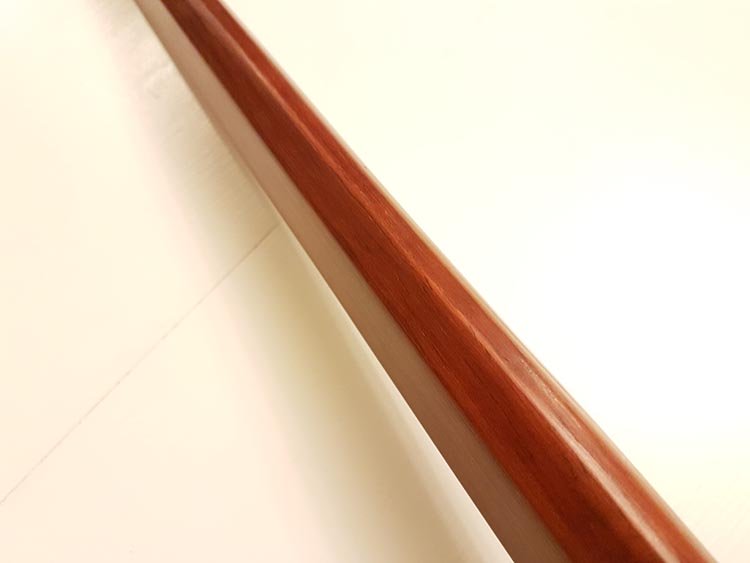Recent Articles
-
Christmas Sword Buying Guide 2025
Dec 03, 25 10:53 PM
Samureye Bokken Review
What is a Bokken?
To some sword collectors, a Bokken may seem like no big deal. It’s a toy sword, a stick. Not really all that necessary or interesting for a true sword collector – however, nothing could be further from the truth.
Traditional Japanese Bokken are expertly crafted, supremely functional training tools. Designed for the purpose of training samurai in the art of the Japanese sword without the dangers of live steel, these practice swords (for that is what they are) were nonetheless lethal weapons in trained hands. In fact, according to accounts of the life of Miyamoto Musashi, the master swordsman was able to defeat multiple opponents using genuine katana with only his bokken – killing several in the process (including the eminent Sasaki Kojirō). Wielding them, and constructing them, required time and consummate skill.
In modern times the Bokken has shown up from time to time, but it tends to take a back seat or be overshadowed by swords made of steel. There are still moments when even pop culture takes notice of their place in history and training, as seen here in the historically implausible (but TONS of fun) film The Last Samurai when Tom Cruise is well and truly beaten down by a man wielding a Bokken during an impromptu training match (though, in true 'training montage' fashion, he does better in the re-match!):
Because the average sword collector is typically spending their money on actual swords, most Bokken for sale have one overriding factor – low price. I own a Bokken that I purchased several years ago for about $12, and I’ll be honest – it was a toy sword. It was a stick. It was low quality, and got incredibly banged up after one sparring session with an identical Bokken. I didn’t put much thought into Bokkens for years afterward except to feel a little skeptical that Musashi ever actually killed someone with one of these skinny things…
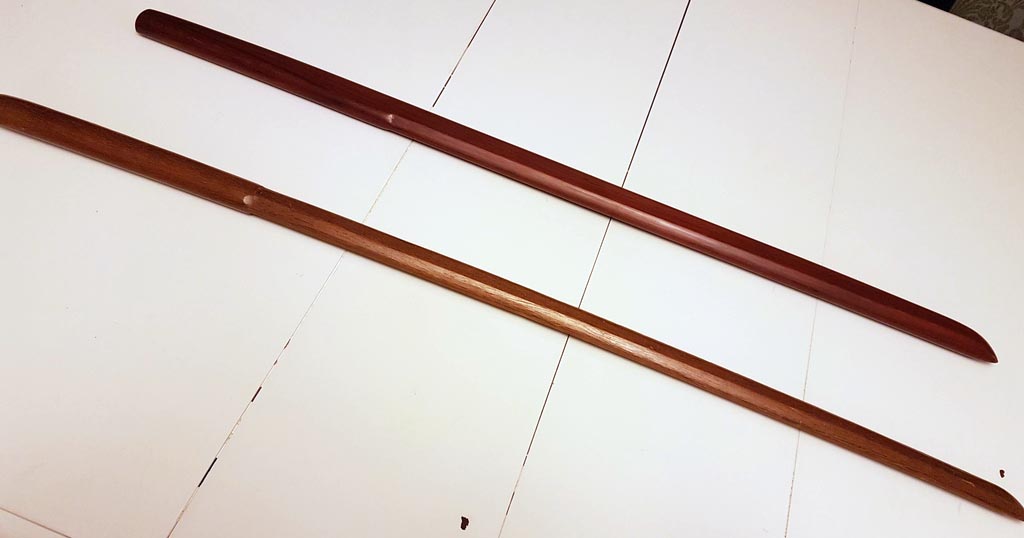 Pictured: Cheap Bokken (bottom) compared to Samureye Hardwood Bokken
Pictured: Cheap Bokken (bottom) compared to Samureye Hardwood BokkenI was, of course, completely wrong. A little over a year ago I was at the Central Canada Comic-Con (C4) when I saw a booth set up with a display of Bokkens in front. Curious, I went over to have a chat with the guys at the booth – and found out that there was a lot more to Bokkens that I had previously believed.
Samureye
The gentlemen I met were part of a new startup called Samureye Bokkens, a small shop specializing in exotic hardwood Bokken. They had a number of extremely attractive Bokken on display, and my eyes were drawn to the smooth grains and expert shaping (a lifetime ago, I was a custom woodworker). The workmanship was better than anything I’d seen before in a training sword, certainly much better than I could make myself.
From their website: “The artisan craftsmen at Samureye Bokkens use exotic hardwoods and a discerning eye to create showpiece quality bokkens, while maintaining the functional requirements of full contact martial arts equipment.”
We exchanged emails, and started up a casual correspondence that continues today. During the intervening months I did more research about Bokkens and their use in martial arts, as well as reading the classic novel Miyamoto Mushashi by Eiji Yoshikawa. Finally I asked the guys at Samureye if they would be interested in doing an interview for SBG – and they agreed! You can find the interview here
They also graciously provided us with a Bokken to review – so please read on to see it for yourselves!
The Bokken
The staff at Samureye chose to send us the following specimen (text from their website):

Bokken Properties
Weight - 524 grams
Length - 37-1/2"
Thickness at Handle - 7/8"
While keeping in line with traditional designs, this solid Padauk bokken has a classic rounded shape with a deep chevron spine, This triple-taper designed bokken was 100% blade carved by hand tools. The tapers are from the Tsuba to the Kissaki and from the Tsuba to the Tsuka Gashira, from the Mune to the Ha. With a multi-coat polyurethane finish, this Padauk bokken is ready for full contact and kata training.”

I was immediately struck by the heft of the Bokken as it emerged from the parcel. Unlike the previous Bokken I had handled, this one had presence. There was real heft to it, a weight and a solidity that immediately struck me with a feeling of strength. I remember remarking to my wife as I held it for the first time,
“Oh yeah. I can see how Musashi used to crush skulls left and right with one of these.”
(I am, if nothing else, a hopeless romantic.)
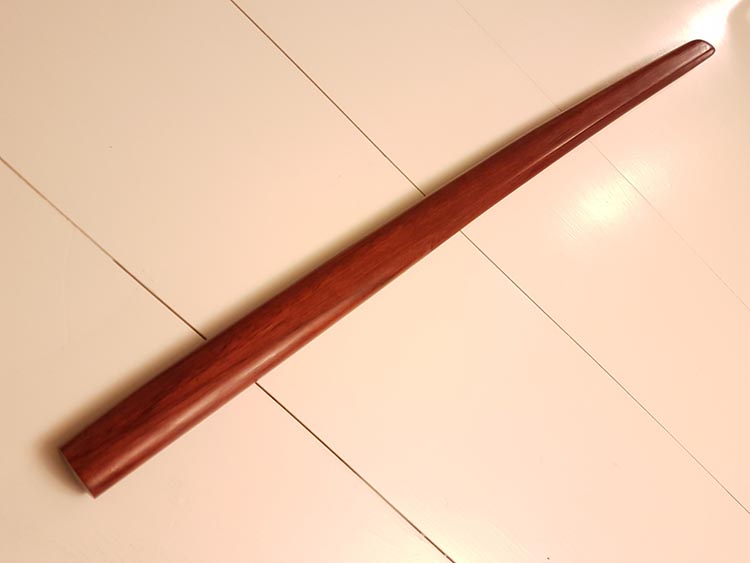
There were a few other aspects of the Bokken that I will comment on here, and I took some pictures – though it is difficult to really capture the richness of the exotic woods in digital photography. Paduak is (I’ve learned) a wood renowned for its unique colouration, though also for its stability and resilience. A good choice for a Bokken!
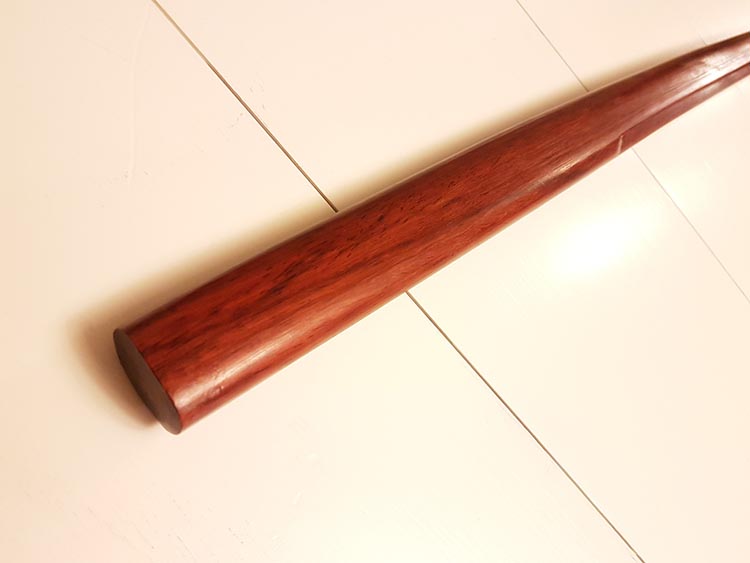
The handle was sculpted well and fit my hands adequately. It was comfortable to hold and to swing, and while impact was transferred into my hands it was not an unreasonable amount – wood is a decent shock absorber, which is why it makes such great handles for swords.
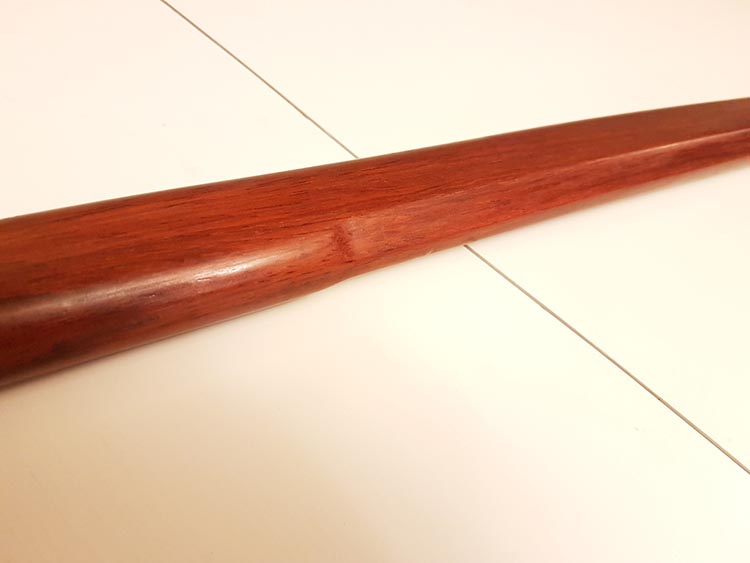
The “blade” of the Bokken is not perfect – that is, the lines are not exactly straight and there are minor imperfections in the details. This is to be expected – after all, each of the Bokken are carved with hand tools – no easy feat considering the different tapering involved. And to be completely honest, you have to examine the Bokken so closely to find the imperfections that for all intents and purposes they may as well not be there.
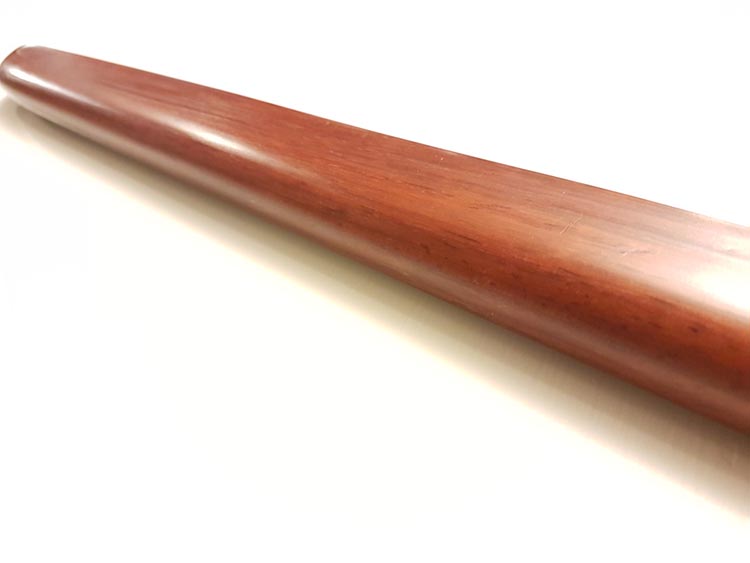
A few more shots of the blade (gallery)
Here is where the shortcomings of doing these reviews over the internet come in. It’s incredibly difficult to capture the depth of the grain structure and have it accurately translate to the screen. It’s like trying to take a picture of a mountain range – inevitably, you wind up with a two-dimensional image that appears flat, shallow, or unsubstantial.

In person, though, you get the opportunity to view the wood from different angles and appreciate how complex it is, how it can have so much character while still being so smooth. In short – you need to see it for yourself to truly appreciate it!

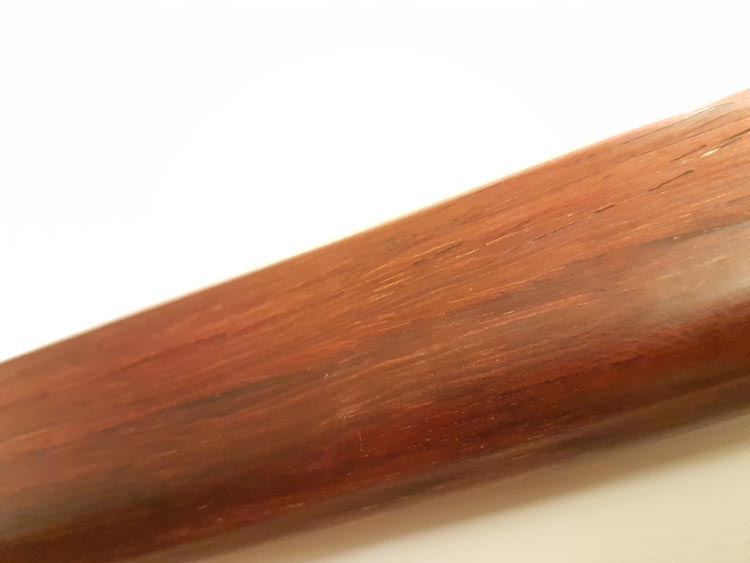
I gave it a few whacks against the cheap Bokken I bought years ago and the Samureye did have some noticeable marks. They were not deep, though, as you can see from the picture.
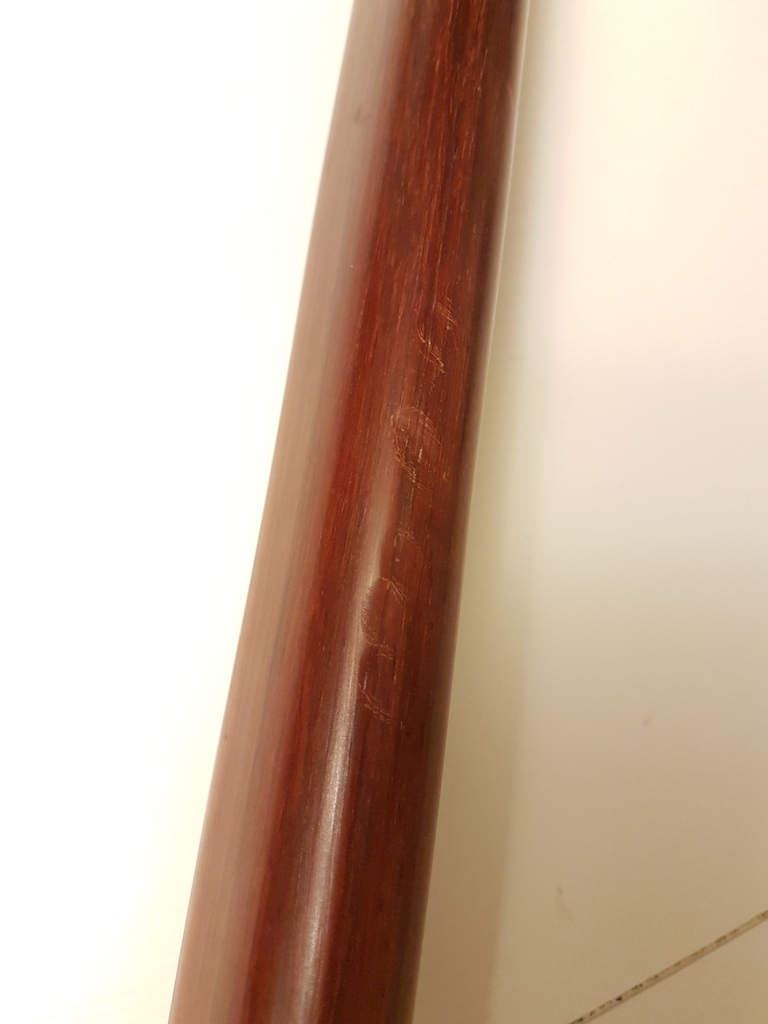
The old Bokken, however… let’s just say it had quite a few more dings in it. Using a soft wood for a Bokken is a poor choice, especially when pitted against an exotic hardwood like the Samureye.

Conclusion
From start to finish, the Samureye Padauk Daito does not fail to deliver. From the wood choice and carving to the final polish, it is a solid piece of craftsmanship that impressed the hell out of me. It also brought into stark realization the true potential of a Bokken as a weapon – they are tools, not toys, and you would fool around with these at your peril. Unlike the cheap $12 Bokken that I’ve handled before, with these Bokken improper training and preparation could easily result in broken bones or worse. Sparring is serious business – and a true Bokken like this makes that fact abundantly clear.
Most sword collectors, without knowing any better, would probably choose to pass these by – and that would be a great shame. Bokken like these, especially ones hand made by skilled craftsmen, put a bit of history into your hands – in the same way that picking up a sword does. And isn’t that partly why we have sword collections – to carry around bits and pieces of the past?
I have been very pleased with my Samureye experience, and would wholeheartedly recommend them to martial artists, fans of Japanese culture, or anyone looking to expand their sword collection to include functional works of art of a different, but related, variety.
WHERE TO BUY
Samureye Bokken are exclusively available from their website here
We hope this review of the Samureye Bokken has been helpful. To return to Sword Fighting and Training Basics for Beginners from Samureye Bokken Review, click here

Buying Swords Online Can Be DANGEROUS!
Find the Best Swords in the:
Popular & Recommended ARTICLES

The ONLY true free online magazine for sword enthusiasts. Delivered once a month on the 1st day of the month, no filler and no BS, just the latest sword news & info delivered straight to your inbox.



